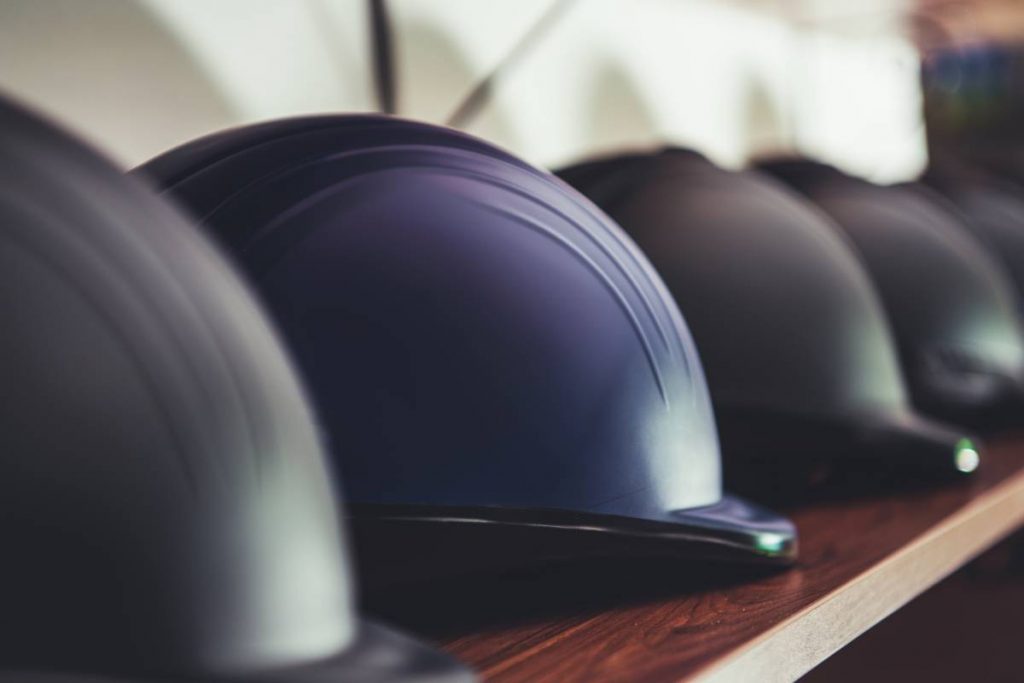Staying safe on a construction site is essential due to various risks like heavy machinery and falling debris. To protect themselves, workers must follow safety protocols and wear the right gear.
Wearing a hard hat is crucial for shielding your head and neck from injuries caused by falling materials. However, it’s only effective when worn correctly.
Putting on a hard hat might seem straightforward, but wearing it properly is vital. The way you wear it can make a big difference in preventing serious head injuries.
In this guide, we’ll cover the essential steps for wearing a hard hat correctly to ensure maximum protection.
Related article
Parts of a hard hat
First thing first, let us introduce you the parts of the hard hat, just in case some of you might not be familiar with this safety gear. Here’s a breakdown of the key parts of a hard hat:
- Shell: This is the outer layer that absorbs the impact of falling objects.
- Suspension System: Found inside the hard hat, it moulds around the wearer’s head for a snug and secure fit.
- Cradle: A component of the suspension system that secures the front of the hard hat in place.
- Headband: It connects to the suspension system and wraps around the head.
- Sweatband: Positioned at the front of the headband, it absorbs sweat.
- Brim: Extending from the front of the shell, it offers shade and protection.
- Nape Strap: This strap rests against the area where the head meets the neck and often includes a ratchet.
- Ratchet: The knob on the nape strap that adjusts the fit of the hard hat.
With this understanding, let’s explore some essential dos and don’ts for wearing a hard hat correctly.

What are the dos and don’ts when wearing a hard hat?
Do(s)
Ensure Proper Fit
The key to wearing a hard hat effectively is making sure it fits correctly. Measure the circumference of your head above the eyebrows and ears to find your size. Then, refer to the manufacturer’s sizing guide for the best fit. Adjust the ratchet at the back of the nape strap to tighten or loosen the fit as needed.
Regular Inspections
Regularly inspect your hard hat to ensure its integrity. Daily wear and tear on construction sites can compromise its protective qualities. Here’s what to look for:
- Shell: Check for cracks, dents, or any other damage. If you spot any, replace the hard hat immediately.
- Suspension System: Examine the straps and headband to ensure they’re intact and not worn or frayed. Replace any damaged parts.
- Manufacturer Dates: Many hard hats have stickers indicating their manufacturing date or last inspection. Make sure these stickers are current. Most manufacturers recommend replacing the hard hat after five years.
Store Your Hard Hat Safely
Properly storing your hard hat is essential for its longevity and your safety. Follow these tips to ensure it stays in good condition:
- Choose a Cool, Dry Location: Heat, humidity, and sunlight can degrade your hard hat. Store it in a cool, dry place away from direct sunlight when not in use.
- Avoid Vehicle Storage: Extreme temperatures in vehicles can make the hard hat brittle. If you must store it in a vehicle, keep it in a storage compartment or under a seat.
- Don’t Hang by Straps: Hanging the hard hat by its suspension straps can deform them and affect the fit. Instead, place it on a flat surface for storage.
- Keep Away from Chemicals: Exposure to chemicals like gasoline and strong cleaners can weaken the hard hat. Store it away from such substances to maintain its integrity.

Don’t(s)
Wearing Items Under Your Hard Hat
Wearing anything underneath your hard hat, such as a baseball cap, beanie, or hood, can compromise its fit and effectiveness. These additional layers may disrupt the proper functioning of the hard hat, potentially reducing its ability to protect you.
Putting on a hat beneath your hard hat can interfere with its suspension system, which is crucial for ensuring a secure fit. Moreover, it decreases the clearance space between the hard hat shell and your head. Insufficient clearance compromises the hard hat’s ability to shield you from falling debris.
While it may be permissible to wear a very thin liner under a hard hat in certain circumstances, always refer to the manufacturer’s guidelines and safety recommendations for confirmation.
Wearing Your Hard Hat Incorrectly
Never wear your hard hat positioned on the back of your head. Unlike other hats that may sit with the brim upturned, your hard hat should always be placed in a neutral position on the top of your head.
Ensure the headband rests comfortably on your forehead just above your eyebrows, while the nape strap fits snugly where the back of your head meets your neck.
Wearing the hard hat at the back of your head exposes your forehead and disrupts its proper fit, diminishing its effectiveness in protecting you.
Blocking Your Vision with the Brim
Never let the brim of your hard hat obstruct your vision. Although the brim serves to shield your face from elements like sunlight and rain, it should not impede your view.
If the hat sits too low on your forehead, it can hinder your ability to see potential hazards, falling debris, obstacles, or people in your work environment.
Additionally, wearing the hat too low on your forehead leaves the back of your head and neck vulnerable in hazardous situations.

4 tips for finding the perfect hard hat fit
When choosing a hard hat for construction safety, getting the fit just right is crucial. From ventilation to adjustment features, here are four pointers to help you find the ideal hard hat:
- Allow for Breathing Room: Ensure there’s some space between the suspension and the shell of the hard hat. This ventilation gap not only keeps you comfortable but also absorbs the impact of falling debris, enhancing safety.
- Balance Security and Comfort: While a snug fit is important, overly tight hats can lead to discomfort, pain, and hair pulling. Aim for a secure fit that won’t slip off your head.
- Opt for Adjustable Mechanisms: Look for hard hats with sliding mechanisms for fit adjustment. These hats can accommodate a wider range of head sizes and shapes, ensuring a customized fit for each wearer.
- Keep the Brim Forward: Always wear the hard hat with the brim facing forward. The brim acts as a protective shield, deflecting objects away from your head and face. Wearing it backwards compromises both safety and the suspension system’s fit.
How to take care of your hard hat?
Your hard hat works hard to keep you safe, so it’s essential to give it proper care to ensure it lasts. Here are five easy tips for maintaining your hard hat:
- Regular Cleaning: Use a damp cloth to wipe down the shell of your hard hat regularly. Avoid harsh chemicals that can damage the plastic.
- Temperature Awareness: Keep your hard hat away from extreme heat or cold, as this can make the plastic brittle. Store it in a cool, dry place when not in use.
- Check for Damage: Inspect your hard hat frequently for cracks, dents, or any other signs of damage. If you spot any issues, replace the hard hat right away.
- Replace Worn Parts: If the suspension system shows signs of wear or damage, replace it with a new one from the same manufacturer. This ensures your hard hat continues to provide proper protection.
- Avoid Modifications: Never drill holes, paint, or alter your hard hat in any way. These modifications can weaken its structure and compromise its effectiveness in protecting you.
Conclusion
In the bustling realm of construction, cutting corners on safety just doesn’t fly. Think of your hard hat as your trusty sidekick, always there to take the hit so you don’t have to. Getting to know its features, making sure it fits like a glove, and keeping it in tip-top shape isn’t just smart—it’s essential. It’s like giving your guardian angel a high-five. So, gear up, stay sharp, and keep the job site vibe safe and sound for the whole crew. After all, when safety’s first, everybody wins.





